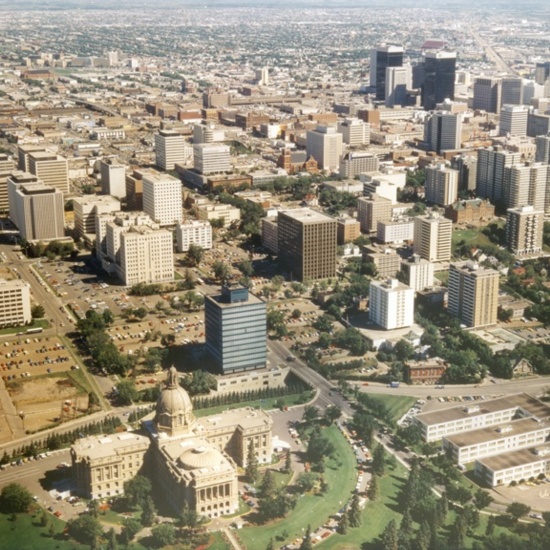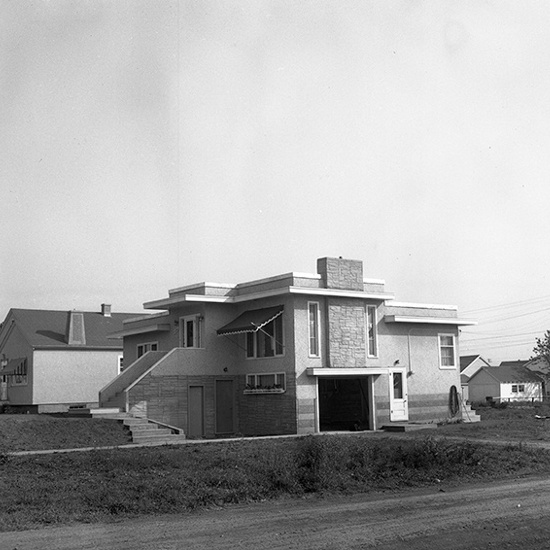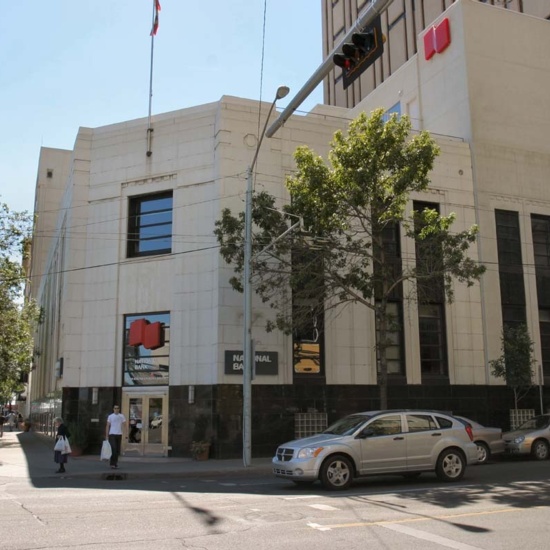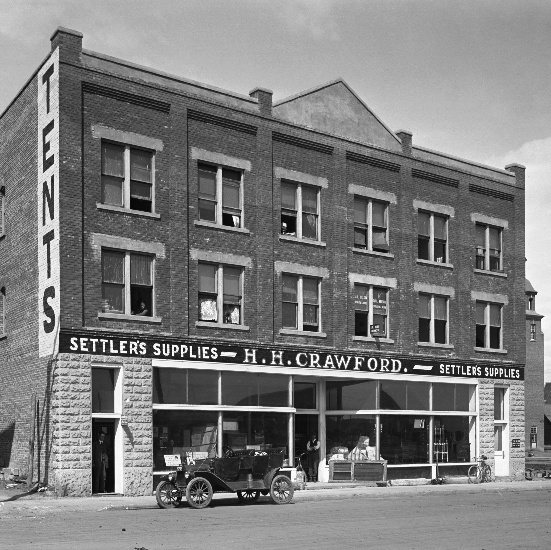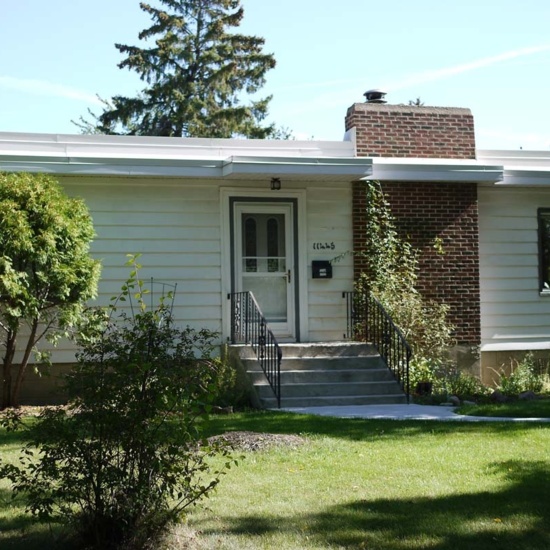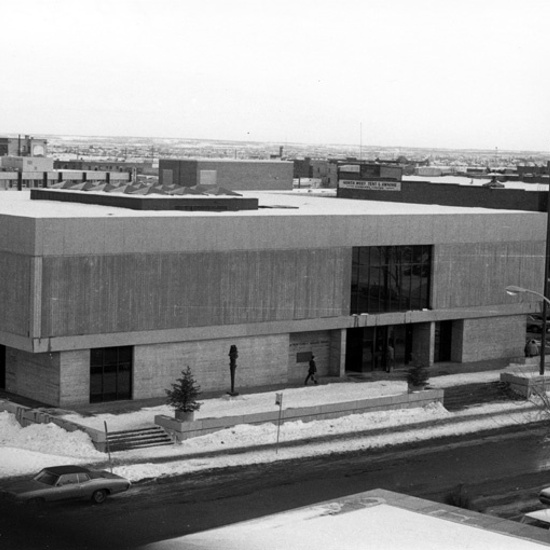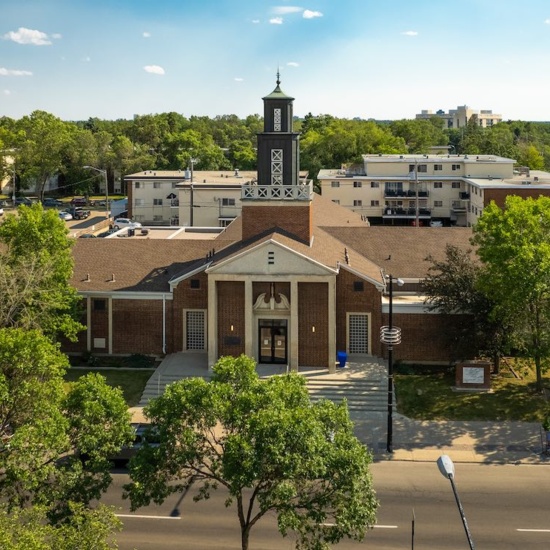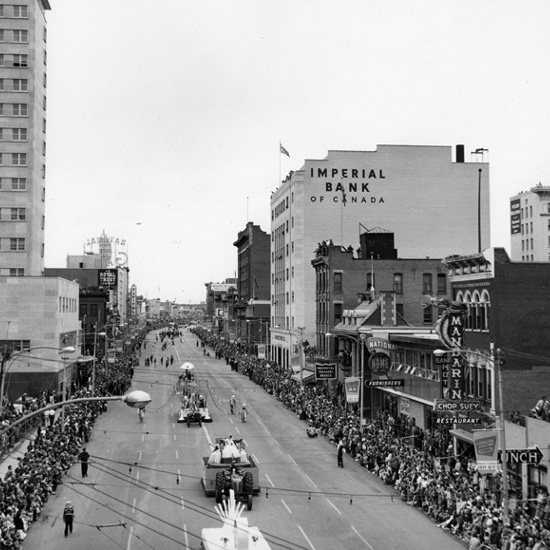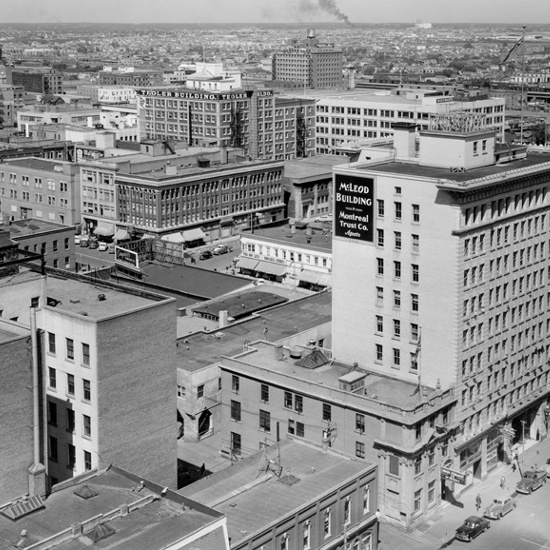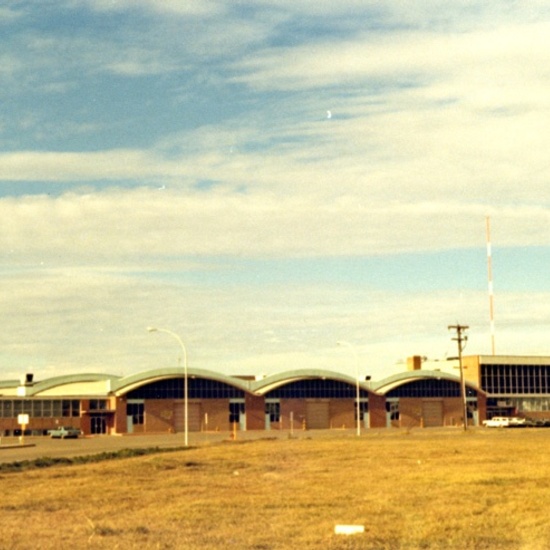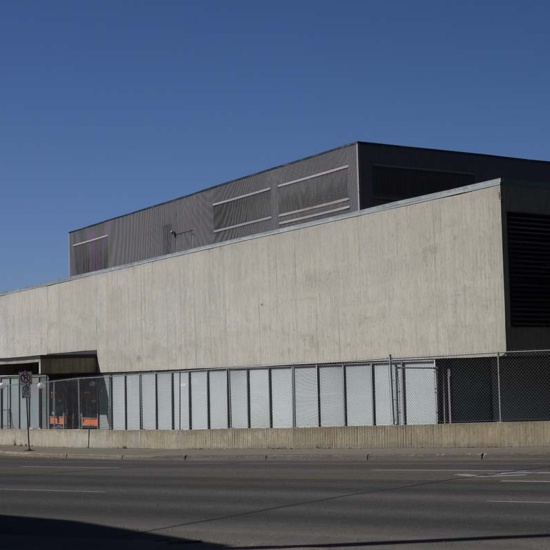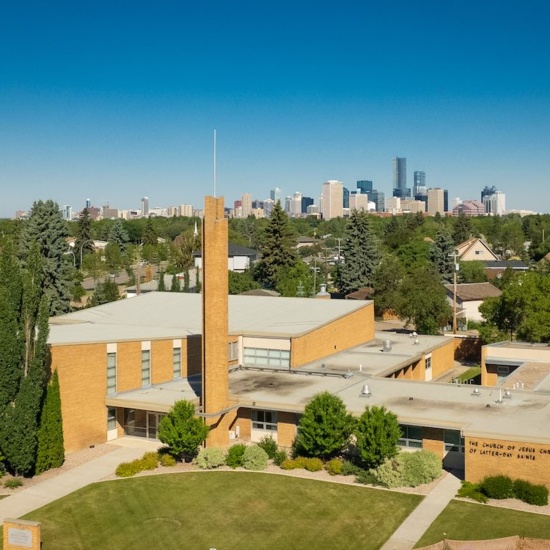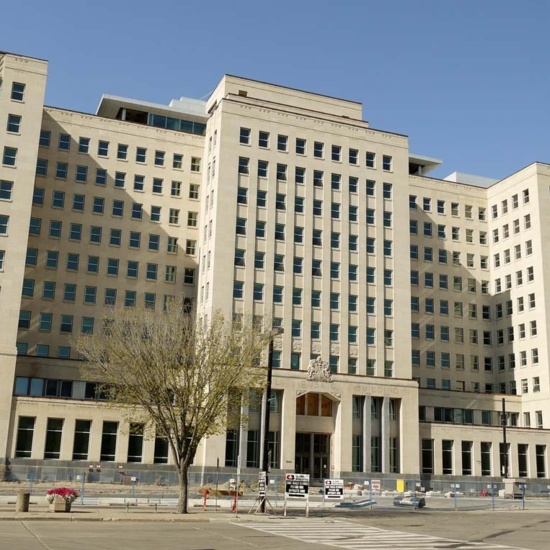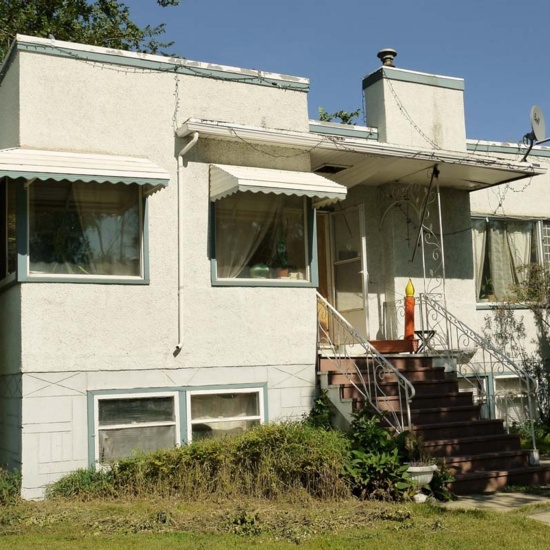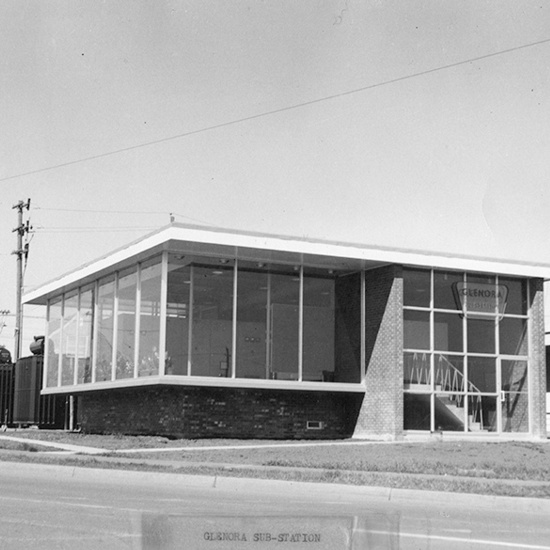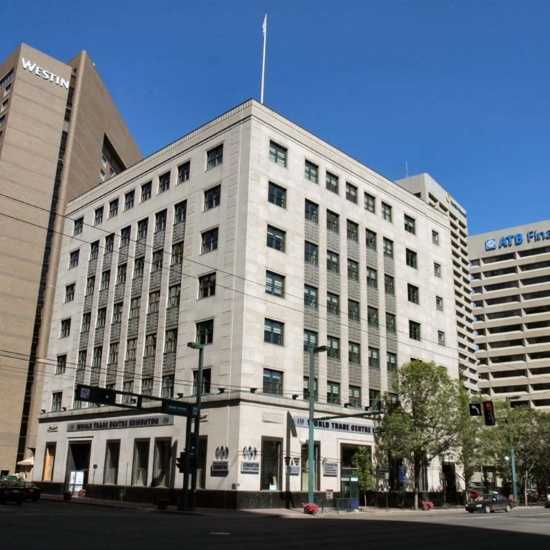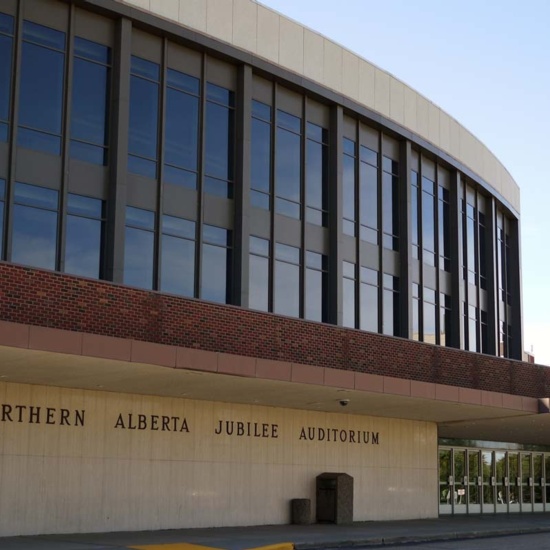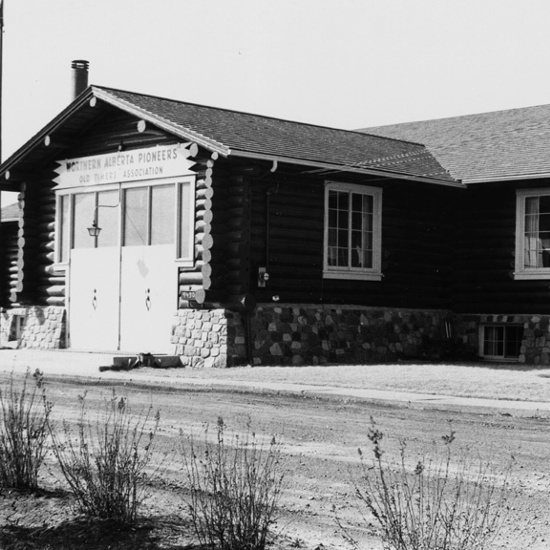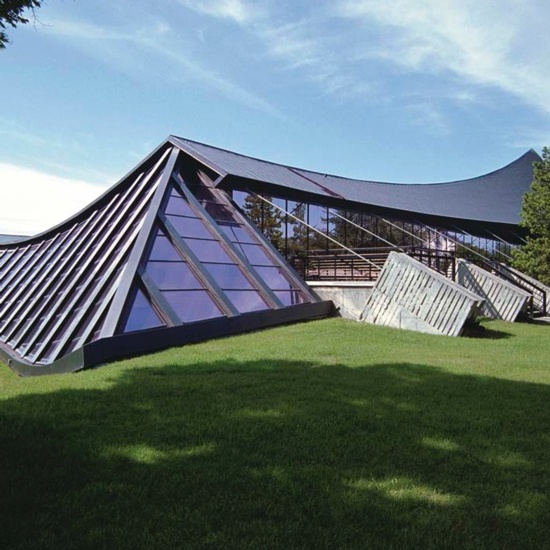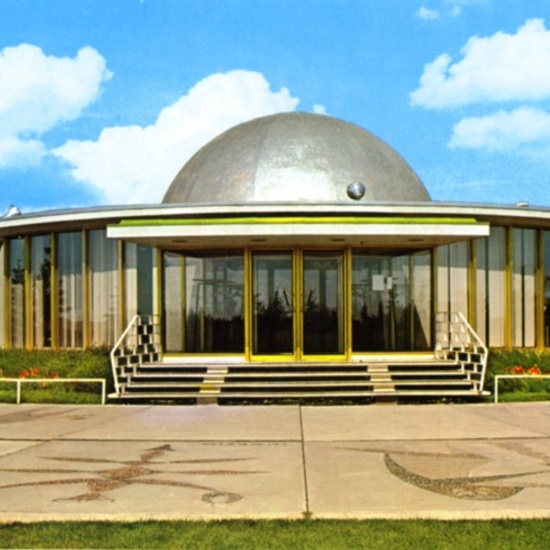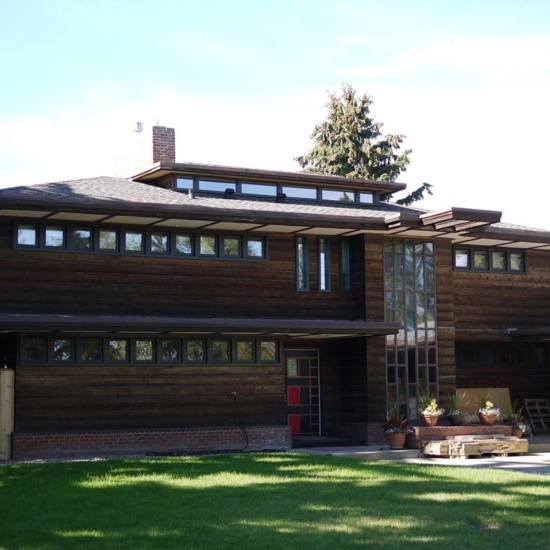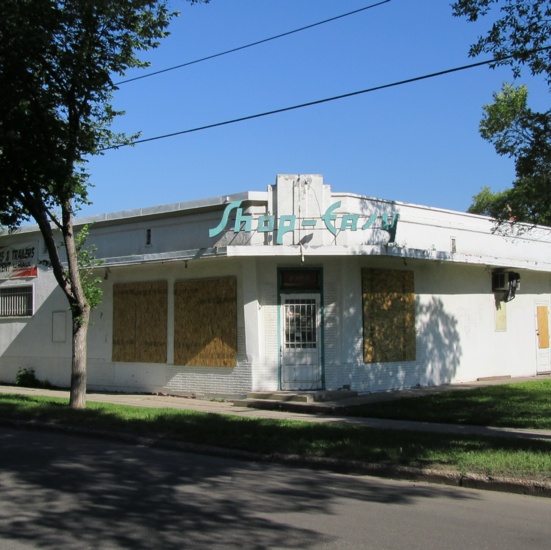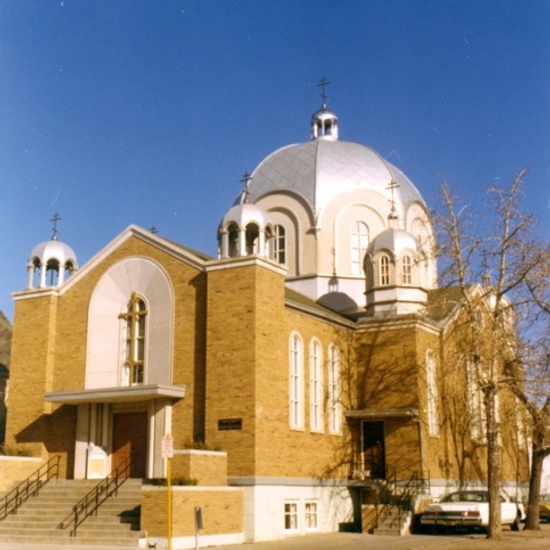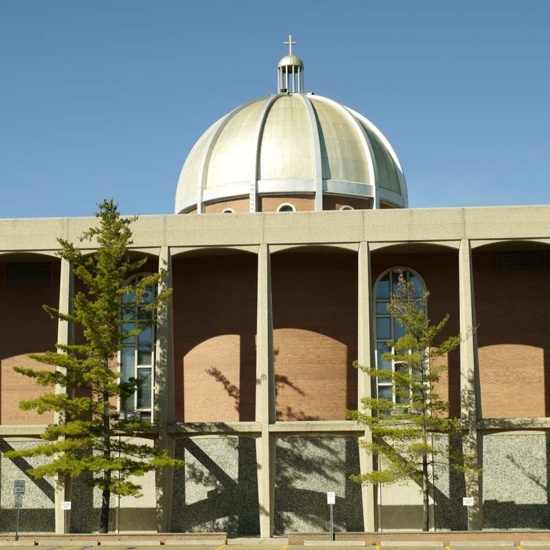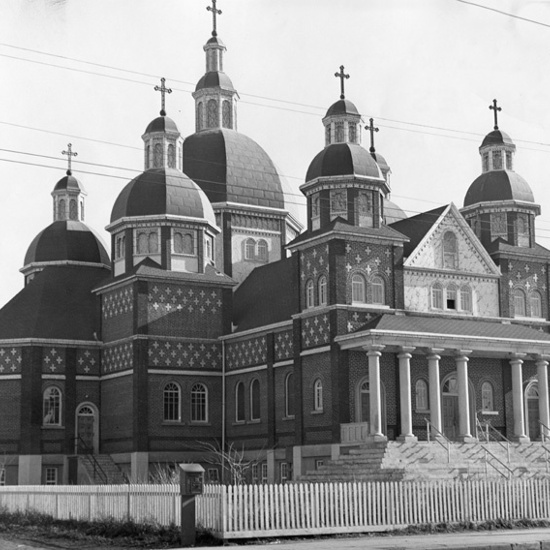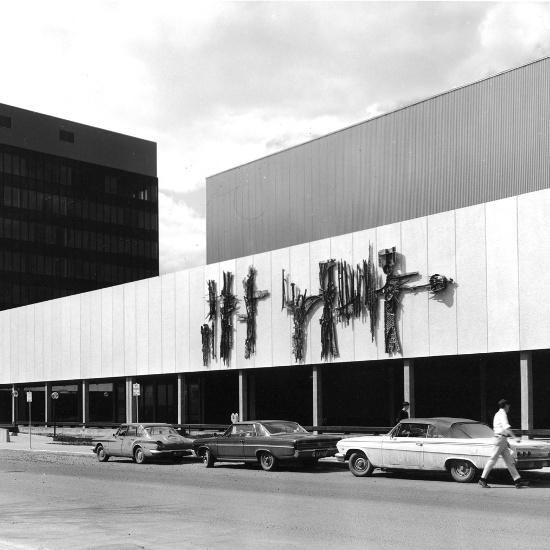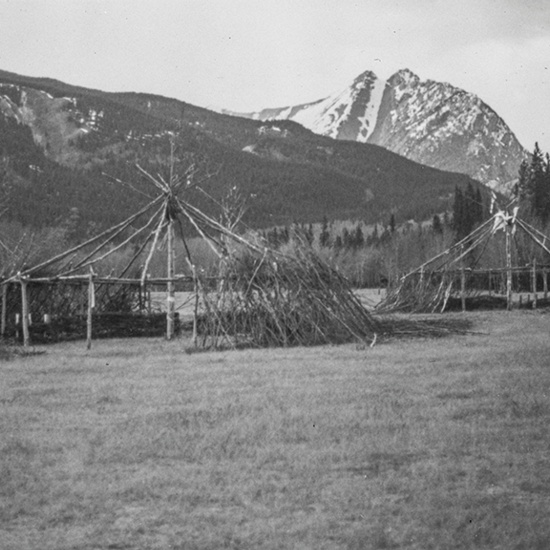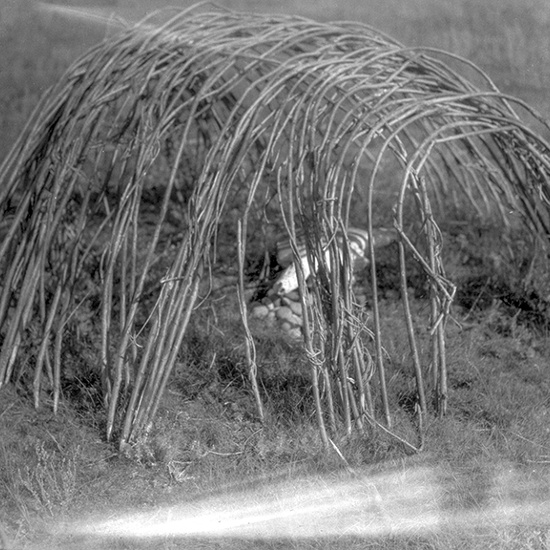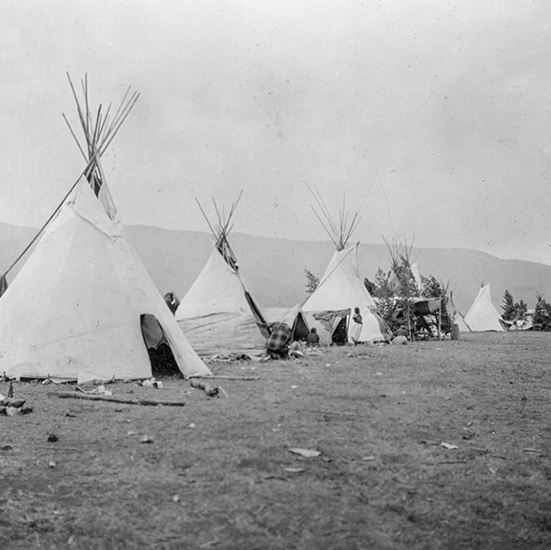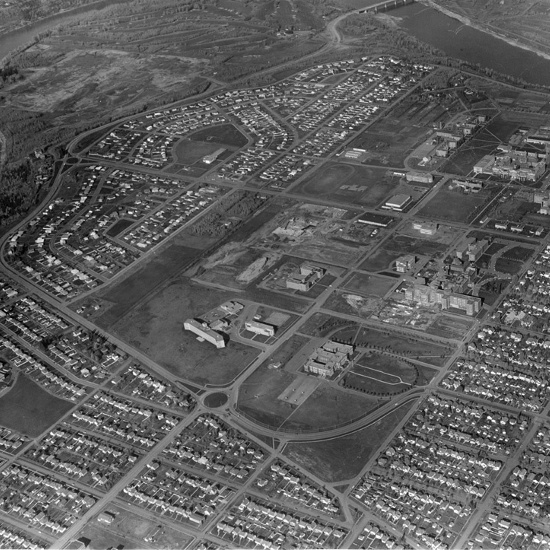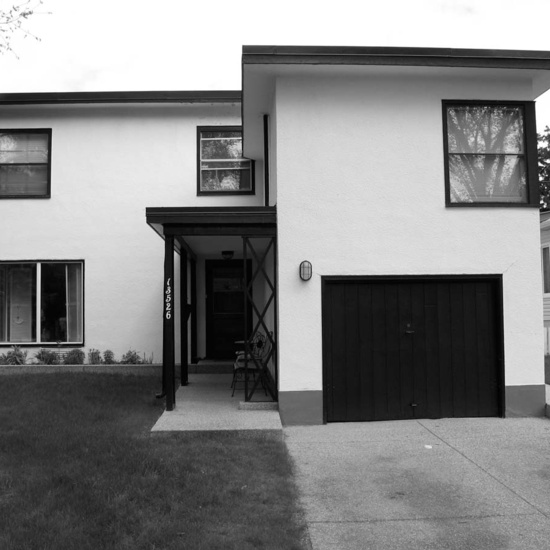The Post War Years: 1946-1970
The discovery of oil in Alberta changed Edmonton forever. Rapid growth, new technologies and changing lifestyles and world views dramatically altered Edmonton’s built landscape.
The discovery of oil in Alberta changed Edmonton forever. Rapid growth, new technologies and changing lifestyles and world views dramatically altered Edmonton’s built landscape.
As Edmonton’s population expanded in a relatively short period of time, the city needed many institutional structures to maintain civic services. New multi-storey buildings changed the face of downtown as many historic buildings were either replaced with larger, modern structures or renovated for new uses. There were multiple influences on styles as the city attempted to find its own architectural identity. Buildings would emphasize craftsmanship and simplicity of line, but were often misunderstood as boring or ugly. They are representative of a significant era in Edmonton’s history, and one that greatly transformed the city.
Historical Context
Returning veterans, unless First Nations or Metis, had access to a wide variety of assistance, including education and housing programs. Edmonton's extraordinary growth was helped by a booming economy due to the discovery of oil, including on First Nations reserves to the South. During this period there was a healthy state of agriculture and the University of Alberta continued to expand. The City hired its first professional planner in 1949 to help manage Edmonton's phenomenal growth.
During the 1950s, the city increased in population from 149,000 to 269,000 people. In 1955, Edmonton was home to one of the first shopping centers in Canada when Westmount Mall opened its doors. The Northern Alberta Institute of Technology opened in 1960 to meet the growing need for skilled technical workers. In 1960, the $25 million Edmonton International Airport, located in downtown Edmonton, opened for commercial flights. Arts organizations, such as the Edmonton Civic Opera and the Edmonton Symphony, found new homes in the Jubilee Auditorium (1957) and the Citadel Theatre (1964).
The first skyscraper in Edmonton, the 27-storey CN tower, was built in 1966. This building would become a staple for Indigenous people arriving in Edmonton by train, to which stories abound. One year later another world class attraction, the Provincial Museum of Alberta, opened during the celebration of Canada’s centennial. Edmonton prospered throughout the 1960s and 1970s as the northern oil boom brought thousands of jobs and newcomers.
Effects of War
Houses were being built at a rate not seen since 1929, but supply was unable to keep up with demand. The first federal housing crown corporation, Wartime Housing Limited (WHL), built and managed rental units for war workers and veterans. In 1946, the federal government initiated a post-war program promoting home ownership, the Canada Mortgage and Housing Corporation (CMHC), which offered easy, low cost mortgages. These low-cost mortgages would create the foundation of future economic prosperity for owners when land values would skyrocket.
The city spread into the suburbs as veterans started families in affordable, suburban houses. Downtown became less of a focal point as services decentralized and distances between services decreased due to the increased use of cars for travel. Auto-culture also led to houses being built with attached garages, a common sight in post-war subdivisions, though less typical in Edmonton’s older neighborhoods.
Details
Duration
1946 to 1970
Structures
Beth Shalom Synagogue
Brodeur House
Churchill Wire Centre
Crawford Block
Dean-Kuperus Residence
Edmonton Art Gallery
Edmonton Branch Chapel
Edmonton Power Maintenance Building
Edmonton Public School Board Building
Edmonton Stake Centre
Federal Building
Frost Residence
Glenora Substation- Station 650
Hyndman House
Imperial Bank of Canada Building
Law Courts
Mayfair Park Pavilions
Northern Alberta Jubilee Auditorium
Old Timers' Cabin
Oliver School
Peter Hemingway (Coronation) Pool
Queen Elizabeth II Planetarium
Shandro Residence
Shop-Easy Grocery
St. Barbara's Russian Orthodox Cathedral
St. Basil the Great Ukrainian Catholic Church
St. Josaphat Ukrainian Catholic Cathedral
St. Joseph's Hospital
Students' Union Building
Sundance or Thirst Lodge
Sweatlodge
Tipi
Valleyview Manor
William Blakey Residence
Architects
William G. Blakey
Richard Palin Blakey
Maxwell Dewar
Robert Falconer Duke
Peter Hemingway
Neil McKernan
Don Bittorf
Arthur Everett
Jock Bell
Hobart Dowler
Fred Thornton Hollingsworth
Nicolas Flak
Eugene Olekshy
Philip Ruh
Gordon Wynn
George Heath Macdonald
First Nations
W. Tefler
William F. Thomas
George E. Turner
Unknown
Bittorf and Wensley Architects
Blakey Blakey & Ascher
Cannon & Mullen
Richards Berretti and Jellinek Architects
Rule Wynn Rule
Neighbourhoods
Boyle Street
Calder
Downtown
Garneau
Glenora
Highlands
McCauley
Oliver
Parkdale
Queen Alexandra
Queen Mary Park
River Valley Walterdale
River Valley West Central
Strathcona
Strathearn
University of Alberta
Westwood
Windsor Park
Woodcroft
Architectural Styles
Art Deco influences
Brutalist
Byzantine
Collegiate Gothic
Edwardian
Indigenous
International
Log
Modern
Moderne
Prairie
